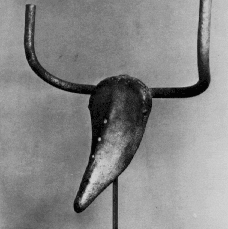| |
2000.10.26 15:20
Baroque beginnings?
Alex asks:
To repeat a previous question: who designed the Baroque? OR How did the Baroque arise (emerge)? Any takers?
Steve offers:
I think Michelangelo's architecture (which was more or less a product of his late life) manifested tremendous 'new' inspiration for later 16th and 17th century architecture. The details of the Porta Pia and the wholly integrated articulation of the Sforza Chapel offer (imo) architectures completely unprecedented until that time, which in turn inspired new architectures. Likewise, the 'undulating' wall of St. Peter's no doubt became the new paradigm, especially considering that St. Peter's then (as now?) represented the ultimate place of worship. In simple terms, it is best to learn from the best.
To this day, I am intrigued by Michelangelo's fortification designs for Florence (some executed and recorded as plan drawings). They exhibit many proto-Baroque flourishes, and it is interesting to note the military connection (vis-à-vis 'war and architecture').
"This places Michelangelo's fortification projects among the incunabula of modern military architecture, just at the most fluid and inventive moment in its history, at a time when experience had established no proven formula of design. Unlike the situation in other arts, the lessons of antiquity and of preceding generations were of little account; this is one of those rare events in the history of architecture when technological advances altered the basic precepts of design."
James Ackerman, The Architecture of Michelangelo (Penguin, 1970), p. 127.
Alex also asks:
...is architecture the product of Man (singular, intentional) or of men (plural and impartial)?
Steve replies:
I see architecture as the product of human imagination(s), and that is why I spend my time trying to figure out where human imagination comes from.
| |
2008.07.15 21:12
bored with modern & contemporary, yet?

Picasso wasn't necessarily breaking any rules here, but he was being somewhat improper. What this work tells me is that Picasso recognized a sculptural potential in a bicycle seat and handle that when combined (improperly, in a way not done before) generated a masterpiece. I get the same sense when I look at Michelangelo's architectural detailing. Rather than simply breaking the rules, he saw potential in architectural details that others before him hadn't seen before, and he produced many improper combinations and many unprecedented details, e.g., Porta Pia.
Perhaps Michelangelo didn't even see classical architecture as a set of rules, rather a set of potentials. (And perhaps language/grammer too might not be seen as a set of rules, but rather a set of potentials).
| |
| |
|